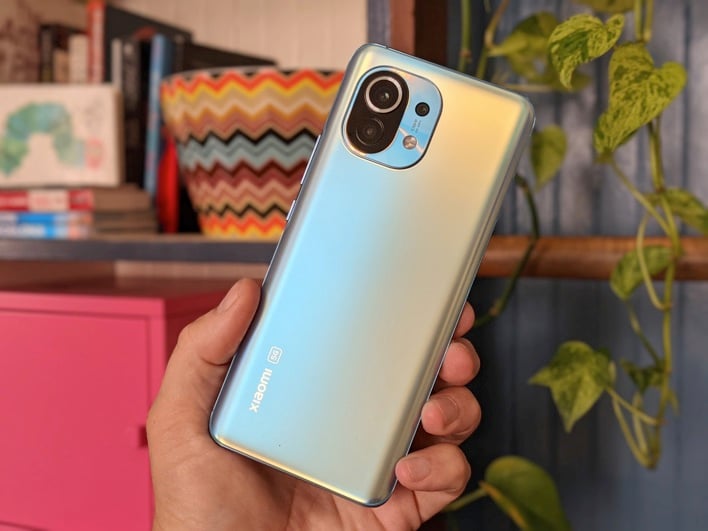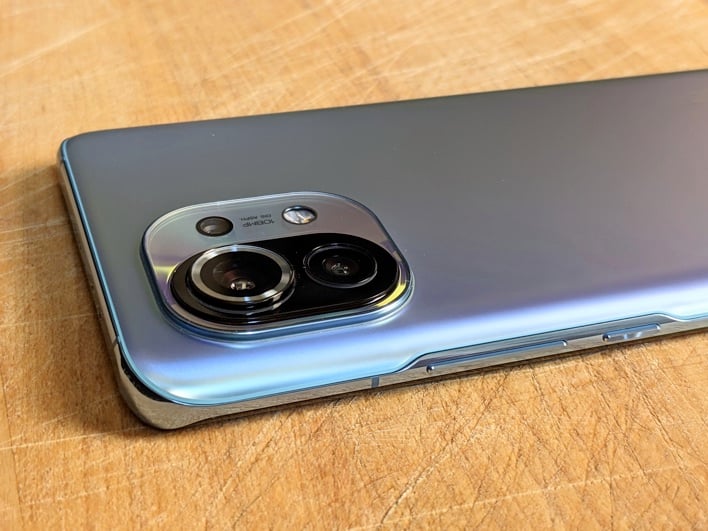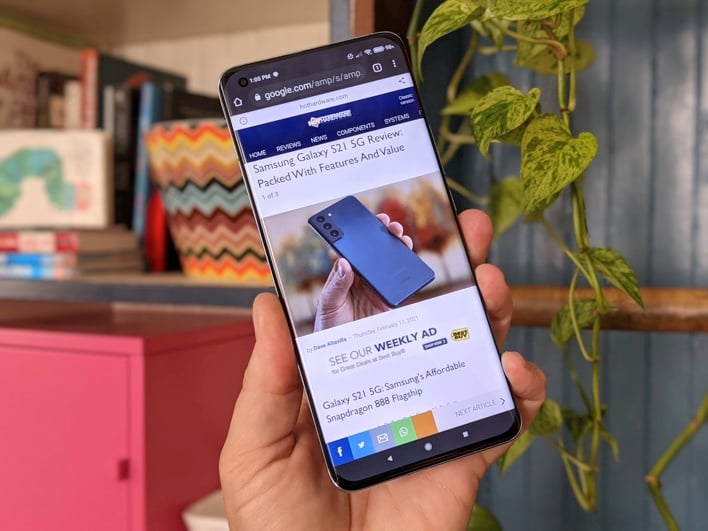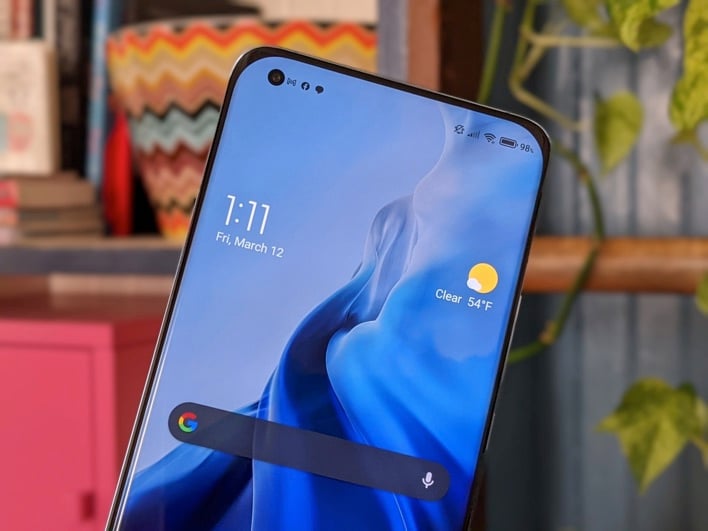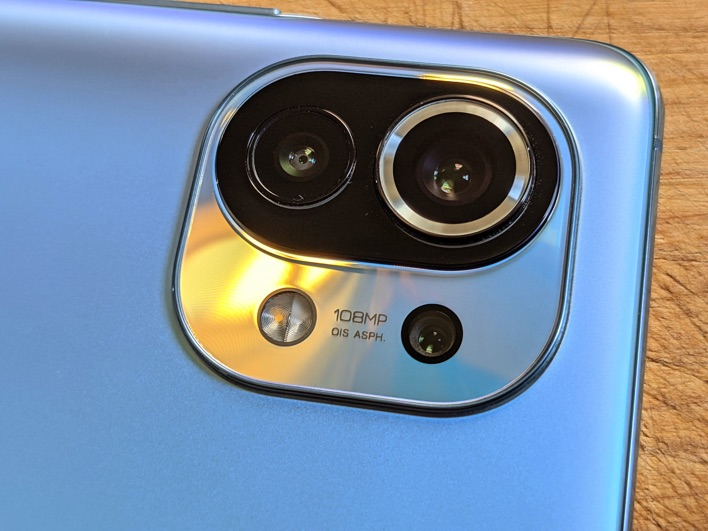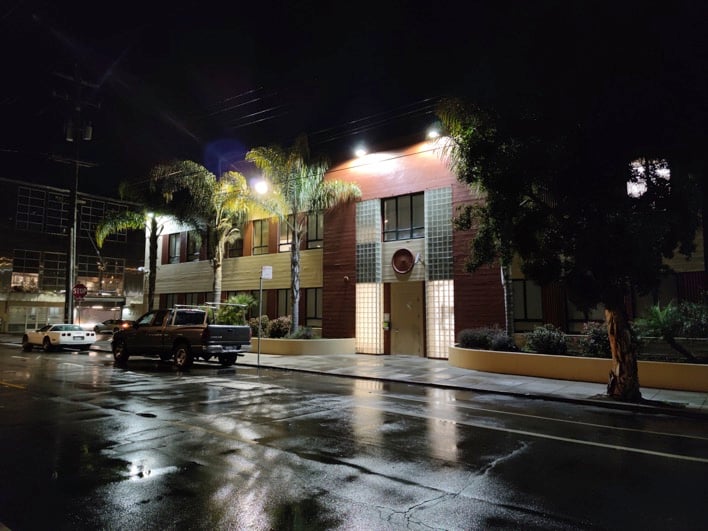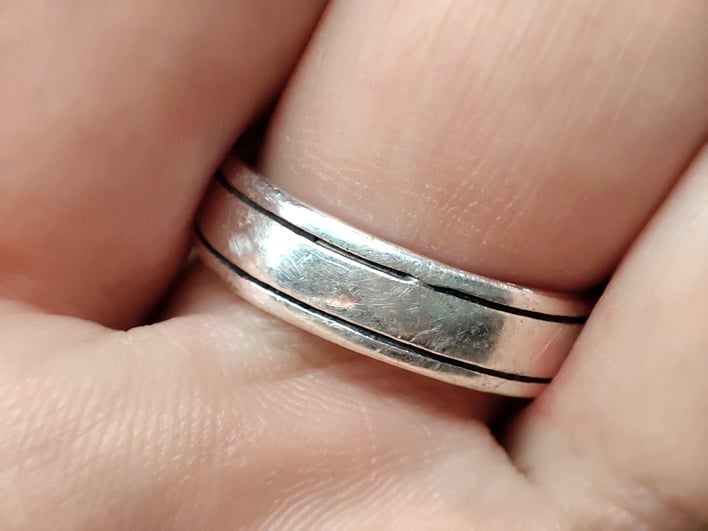Xiaomi Mi 11 Review: A Loaded, Value-Priced Android Flagship
Xiaomi Mi 11 Review: Galaxy S21 Ultra Specs For A Galaxy S21 Price
If you’re a regular HotHardware
reader, or live outside the US, you’re probably somewhat familiar
with Chinese giant Xiaomi. The company makes and sells a wide
variety of consumer electronics from smartphones (branded Mi,
RedMi, Poco, and CC), to electric scooters. It keeps prices low by
subsidizing its products in several markets (like China and India)
via online services -- much like Amazon does here in the US.
Today, Xiaomi ranks number three in global smartphone market share. Its latest flagship, the $750 / €750 Mi 11, was the first handset to feature Qualcomm’s new Snapdragon 888 when it shipped January 1st, beating Samsung’s $800 Galaxy S21 to the punch. With a Quad HD+ 120Hz AMOLED screen, a 108MP main shooter, and 55W wired plus 50W wireless fast charging, the Mi 11 seems like a better deal -- at least on paper.
We’ve been using the Mi 11 for a couple weeks now. What are its strengths and weaknesses? How well does it work on US networks? Is it a better buy than the (now discounted to $700) base Galaxy S21? Read our full review to find out.
Today, Xiaomi ranks number three in global smartphone market share. Its latest flagship, the $750 / €750 Mi 11, was the first handset to feature Qualcomm’s new Snapdragon 888 when it shipped January 1st, beating Samsung’s $800 Galaxy S21 to the punch. With a Quad HD+ 120Hz AMOLED screen, a 108MP main shooter, and 55W wired plus 50W wireless fast charging, the Mi 11 seems like a better deal -- at least on paper.
We’ve been using the Mi 11 for a couple weeks now. What are its strengths and weaknesses? How well does it work on US networks? Is it a better buy than the (now discounted to $700) base Galaxy S21? Read our full review to find out.
Xiaomi Mi 11 Hardware And Design
At first glance, the Xiaomi Mi 11 is just another glass and aluminum
flagship with a large 6.81-inch “waterfall” display. But flip it
over, and it immediately stands out, thanks to fun color and
material options, plus a unique camera pod in the top left corner.
The two-tiered bump consists of a black pill-shaped rectangle
that’s home to the 108MP main and 13MP ultrawide shooters, set
within a shiny rounded square that matches the color of the back
panel.
The 5MP macro camera and a dual-color dual-LED flash are mounted to the right of that rounded black rectangle, and a raised silver rim encircles the main shooter. Back panel materials include glass with a satin finish (Midnight Gray, Cloud White, or Horizon Blue -- like our review unit), glass with a “corrugated” finish (Special Edition Blue), or eco leather (Violet, Gold). It’s definitely a step up from the Galaxy S21’s plastic back.
The 5MP macro camera and a dual-color dual-LED flash are mounted to the right of that rounded black rectangle, and a raised silver rim encircles the main shooter. Back panel materials include glass with a satin finish (Midnight Gray, Cloud White, or Horizon Blue -- like our review unit), glass with a “corrugated” finish (Special Edition Blue), or eco leather (Violet, Gold). It’s definitely a step up from the Galaxy S21’s plastic back.
Bezels are minimal all around and thankfully, the screen’s
curved edges aren’t very pronounced. A punch hole in the top left
corner is home to the 20MP selfie camera. The rear panel is also
curved along the edges, making the phone much easier to grip. Like
with the Galaxy S21, the Mi 11’s aluminum sides are very thin, but
stretch to incorporate the volume rocker and power / lock key. The
mid-frame is also wider (and machined flat) top and bottom.
We really like the Mi 11’s design. It’s unique, refined, tasteful, and way more premium than what you’d expect for its price tag. Kudos to Xiaomi for doing something different without going over the top. At 164.3 x 74.6 x 8.1mm and 196g (8.6mm and 194g for the eco leather models), this is a big handset. In fact, it’s almost as large as Samsung’s mighty Galaxy S21 Ultra. Yet its sleek lines make it look and feel smaller than it is.
We really like the Mi 11’s design. It’s unique, refined, tasteful, and way more premium than what you’d expect for its price tag. Kudos to Xiaomi for doing something different without going over the top. At 164.3 x 74.6 x 8.1mm and 196g (8.6mm and 194g for the eco leather models), this is a big handset. In fact, it’s almost as large as Samsung’s mighty Galaxy S21 Ultra. Yet its sleek lines make it look and feel smaller than it is.
In terms of layout, you’ll find the volume rocker and a
(slightly convex and textured) power / lock button on the right
side, but nothing on the left. The speaker, primary mic, USB
Type-C port, and SIM tray are located along the bottom edge, and
there’s an IR transmitter, secondary mic, and earpiece port on
top. While the Mi 11 lacks an official IP rating, the gasket
around the SIM tray implies some level of water and dust
resistance.
Check out this unboxing video for an overview of the Mi 11, then we'll dig in a bit deeper for our full evaluation...
|
| Processing And 5G Platform | Qualcomm
Snapdragon 888, Integrated Snapdragon X60 5G Modem |
| Display | 6.81" QHD+ LTPO AMOLED, 3200x1440 resolution, 120Hz, HDR 10+ |
| Memory | 8/12GB
LPDDR5 |
| Storage | 128/256GB UFS 3.1, No microSD |
| Rear-Facing Cameras | 108MP
f/1.9 Main OIS, PDAF - 13MP f/2.4 123º Ultra-Wide - 5MP
f/2.4 Macro AF |
| Front-Facing Cameras | 20MP f/2.2 |
| Video Recording | Up to 8K @ 30fps, 4K @ 60fps, 1080p @ 60fps, 1080p slow-mo |
| Battery | 4600 mAh, 55W wired charging, 50W
wireless charging |
| OS | Android
11 With MIUI 12 |
| Dimensions | 164.3 x 74.6 x 8.6mm (Eco Leather) Or 8.1 mm (Glass) |
| Weight | 194 grams (Eco Leather) Or 196 grams (Glass) |
| Connectivity | 802.11ax Wi-Fi, Bluetooth 5.2+LE,
NFC, IR, USB-C, LTE, 5G |
| Colors | Horizon
Blue, Cloud White, Midnight Gray, Special Edition Blue,
Gold, Violet |
| Pricing | Find the Xiaomi Mi 11 @ Amazon, Starting at $750 |
Xiaomi Mi 11 Display Quality
The Mi 11 packs an absolutely gorgeous 6.81-inch Quad HD+ LTPO
AMOLED display (3200 x 1440 pixels, 515ppi, HDR10+) with a 20:9
aspect ratio and 120Hz adaptive refresh rate. Spec-wise, it
appears very similar to the display employed on Samsung’s Galaxy S21 Ultra, complete with slightly curved edges, 10-bit color depth,
and 1500nits peak brightness. Bezels are small, and there’s a
punch hole for the selfie camera in the top left corner.
It’s difficult to put the quality of this screen into words --
it’s really something you have to see for yourself. Details are
sharp, colors are vibrant but accurate, blacks are inky deep,
and viewing angles are excellent. Brightness is never an issue,
even in direct sunlight. We only have one niggle, and that’s how
the curvature of the panel’s corners doesn’t match the curvature
of the phone’s corners. It’s strange, but once you notice, it’s
hard to un-see.
Xiaomi Mi 11 Camera Performance And Image Quality
On the imaging front, the Mi 11 offers some interesting
features. The main shooter pairs Samsung’s 0.8-micron 108MP HMX
sensor with an f/1.9 lens and OIS. It’s the same sensor found on
last year’s Xiaomi Mi 10 and Moto Edge+. Unlike the 108MP HM1
(Galaxy S20 Ultra and Note 20 Ultra) or the 108MP HM3 (Galaxy S21 Ultra), which both use 9-to-1 pixel binning for a 12MP output, the
HMX uses 4-to-1 binning for 27MP results.
By combining (binning) less pixels, the effective pixel size is 1.6 microns instead of 2.4 microns, favoring detail over low-light performance. This makes sense considering the Mi 11 lacks a dedicated telephoto camera and relies on digital zooming for magnification. Other shooters include a 13MP f/2.4 1.12-micron 123-degree ultrawide, a 5MP f/2.4 1.12-micron telemacro with AF, and a 20MP f/2.2 0.8-micron selfie camera.
By combining (binning) less pixels, the effective pixel size is 1.6 microns instead of 2.4 microns, favoring detail over low-light performance. This makes sense considering the Mi 11 lacks a dedicated telephoto camera and relies on digital zooming for magnification. Other shooters include a 13MP f/2.4 1.12-micron 123-degree ultrawide, a 5MP f/2.4 1.12-micron telemacro with AF, and a 20MP f/2.2 0.8-micron selfie camera.
Xiaomi’s camera app is pretty intuitive, and we have no complaints. Photo modes include pro (manual), portrait, night, 108MP, panorama, super macro, tilt shift, document scanner, long exposure, clone, and supermoon. Yeah, moon photography is definitely a thing on this year’s flagships. Night mode is available on the main, ultrawide, and selfie shooters, while pro mode is available on the main, ultrawide, and macro cameras.
The Mi 11 captures stabilized video (with stereo audio) up to 8k 30/24fps or 4k 60fps with the main shooter, and up to 4k 30fps or 1080p 60fps with the ultrawide. Selfie video maxes out at 1080p 60fps. Video modes include HDR10+, pro (with Log support), night, steady (1080p 30fps), slow motion (1080p 120/480fps), time lapse (up to 4k 30fps), super macro (1080p 30fps), dual video (main plus selfie), short video, vlog, and cool movie effects.
While the lack of a proper telephoto is disappointing, this camera system delivers solid performance, slotting the Mi 11 right below Samsung, Apple, Google, and Huawei’s best. Still, beyond the significantly improved macro, this is pretty much the same imaging hardware Xiaomi shipped on last year’s Mi 10. Obviously, the Mi 11 benefits from the Snapdragon 888’s updated triple ISPs and from revised software, but we were expecting more.
Overall, the Mi 11 produces lovely photos and videos. The main camera is clearly the star of the show. It takes pictures with superb detail and natural colors. Low-light performance is excellent, too, with noise only becoming a problem once you start zooming in. Speaking of which, daytime images are decent up to about 5x magnification. The only real issue we encountered with the main shooter is excessive lens flaring, especially in night mode.
Photos taken with the ultrawide and selfie cameras are nice too, and macro shots are better than we expected, thanks in great part to that autofocus lens. And while the iPhone 12 series still seems to be the video recording champion, Xiaomi wants video to be a critical part of the Mi 11 imaging experience, thanks to features like 8k resolution, pro (manual) mode, night mode, Log support, HDR10+ capture, and fun movie effects. And the results are good.
Besides the missing telephoto, the only way the Mi 11 doesn’t match the competition is the lack of 4k 60/30fps selfie video recording. It’s a strange omission considering how popular platforms like TikTok have become in the last year.
Next up: audio, benchmark performance, and battery life...

